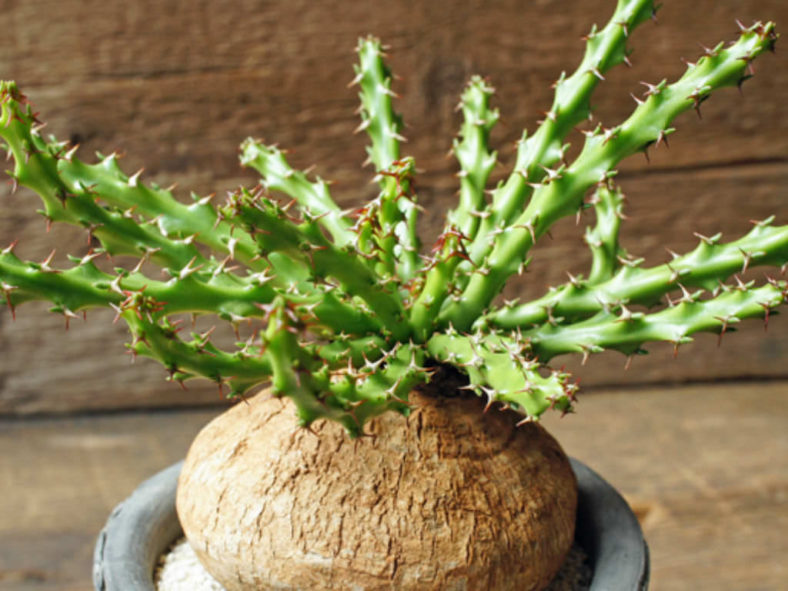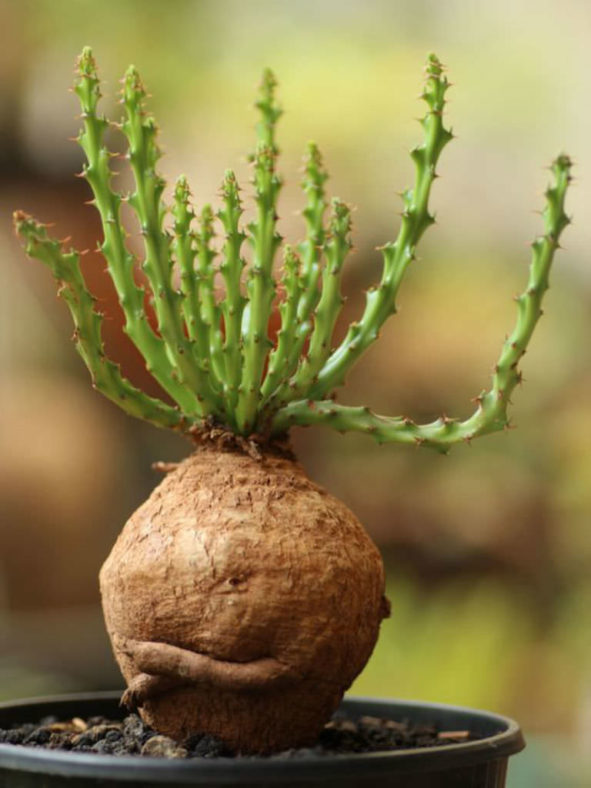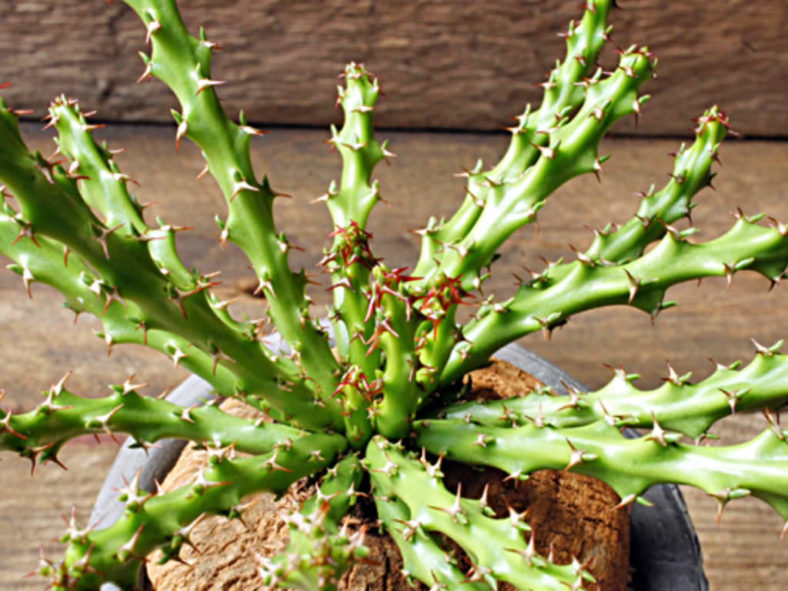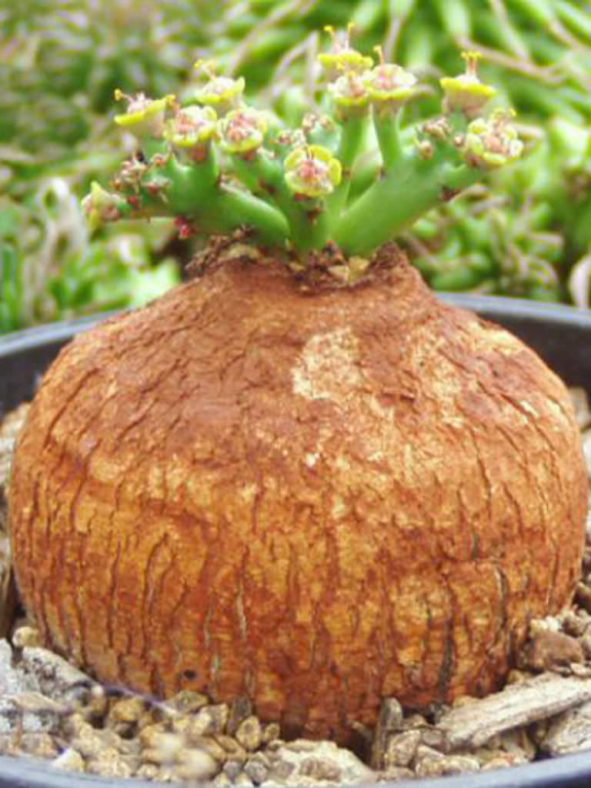Scientific Name
Euphorbia decidua P.R.O.Bally & L.C.Leach
Scientific Classification
Family: Euphorbiaceae
Subfamily: Euphorbioideae
Tribe: Euphorbieae
Subtribe: Euphorbiinae
Genus: Euphorbia
Etymology
The specific epithet "decidua" (pronounced "dee-SID-yoo-uh") means "falling down or off, deciduous" and probably refers to the withering stems of this species, which are deciduous in the dry season in its native habitat.
Origin
Euphorbia decidua is native to Zimbabwe, Zambia, Malawi, and the Democratic Republic of the Congo (formerly Zaire).
Description
Euphorbia decidua is a small succulent with a woody caudex and numerous thin, deciduous, erect or prostrate branches radiating from the caudex apex. The caudex can reach a height of 11.2 inches (28 cm) and a diameter of 3.2 inches (8 cm). The branches are green, erect, 3- to 4-angled, and can grow up to 8 inches (20 cm) long and 0.25 inches (0.6 cm) in diameter. The spines are widely divergent with expanded bases. The leaves are deciduous, lance-shaped, and can measure up to 1.2 inches (0.3 cm) in length.
The flowers are cup-shaped, pale green with a red center.

How to Grow and Care for Euphorbia decidua
Hardiness: USDA hardiness zones 9b to 11b: from 25°F (-3.9°C) to 50°F (10°C).
Euphorbias are very easy to care for. These plants require a little pampering to become established, but once they are, they are self-sufficient. More die from overcare and watering than from neglect. Euphorbias need well-draining soil and ample sunlight. They are not particular about soil pH, but cannot tolerate wet soil. Unlike most succulents, Euphorbia does not handle long periods of drought well. It may need weekly watering during the summer. Water whenever the top several inches of the soil are dry. Water deeply, but avoid letting them sit in wet soil, as this can cause root rot. Add some organic matter or fertilizer to the planting hole. Feed with a half-strength fertilizer monthly if you are growing them in containers or your soil is poor.
These succulents can be grown from seed, but they can be difficult to germinate (or even find). They are usually propagated by cuttings. This can be tricky because of the exuding sap. Rooting hormone is recommended with Euphorbia. They tend to grow problem-free, but there are a few pests and diseases to be alert for.
Learn more at How to Grow and Care for Euphorbia.
Links
- Back to genus Euphorbia
- Succupedia: Browse succulents by Scientific Name, Common Name, Genus, Family, USDA Hardiness Zone, Origin, or cacti by Genus
Photo Gallery
Click on a photo to see a larger version.


